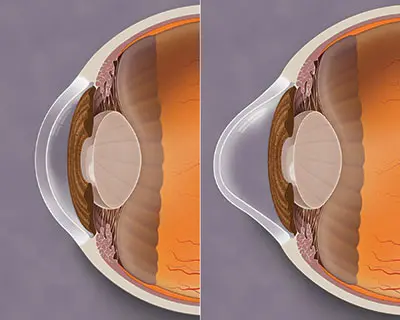What is Keratoconus
Keratoconus is a vision disorder that occurs when the normally round cornea (the front part of the eye) becomes thin and irregular (cone) shaped. This abnormal shape prevents the light entering the eye from being focused correctly on the retina and causes distortion of vision.

What Causes Keratoconus?
- Heredity, One in 10 Keratoconus sufferers has a close family relative with the disorder.
- Frequent eye rubbing, especially aggressive “knuckling” eye rubbing.
- Having a history of asthma, allergies, Ehlos Danlers syndrome, Down’s syndrome
What are symptoms of Keratoconus?
- Slight blurring
- Distortion of vision
- Increased sensitivity to glare and light
- Significant decrease in vision
What to do ?
Keratoconus can be diagnosed through a routine eye exam. Your ophthalmologist will examine your cornea, and may measure its curvature. This helps show if there is a change in its shape. Your ophthalmologist may also map your cornea’s surface using a special computer.
How Is Keratoconus Treated?
- Intacs: This is a small curved device that your ophthalmologist surgically puts in your cornea. Intacs help flatten the curvature of your cornea to improve vision.
- Collagen Cross-Linking (C3R): your ophthalmologist uses a special UV light and eye drops to strengthen the cornea. Doing this helps to flatten or stiffen your cornea, keeping it from bulging further.
- Corneal Transplant: When symptoms are severe, your ophthalmologist may suggest Corneal Transplant. Your ophthalmologist replaces all or part of your diseased cornea with healthy donor cornea tissue.
